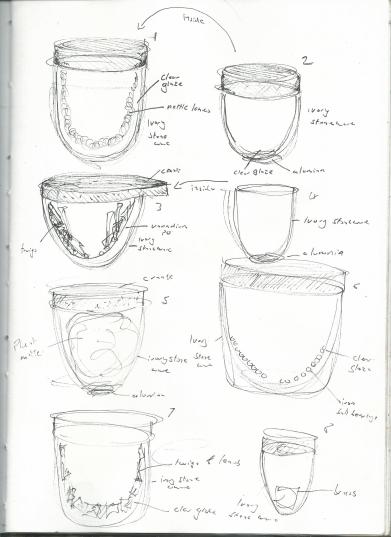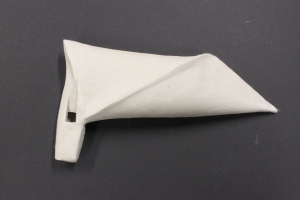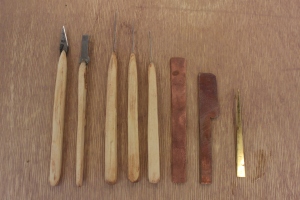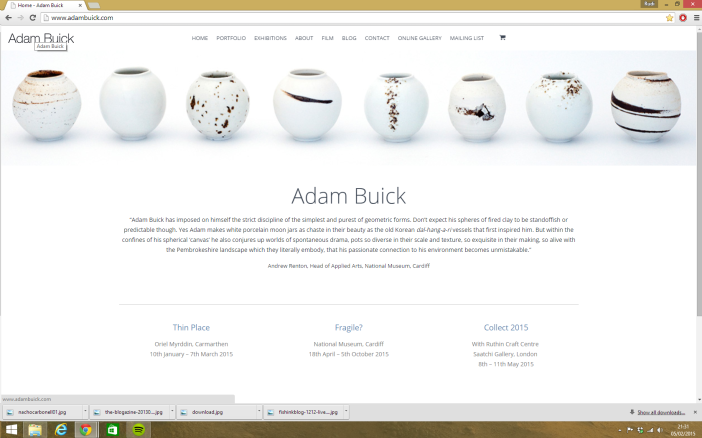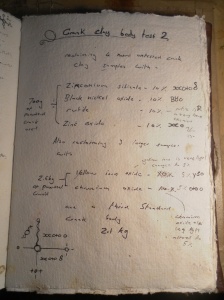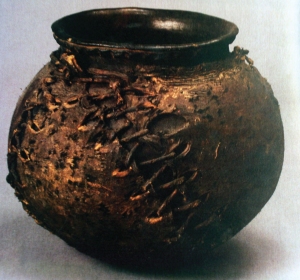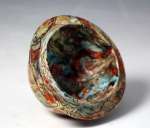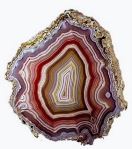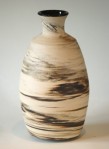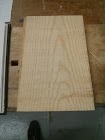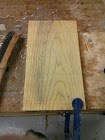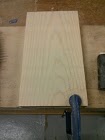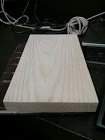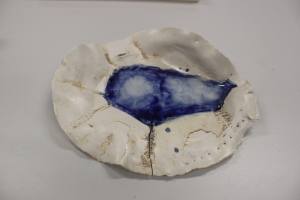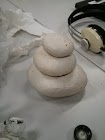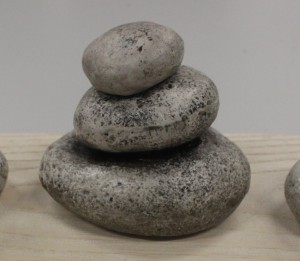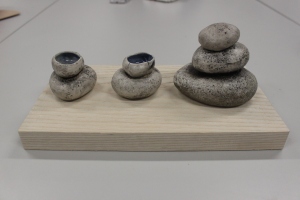Throughout this unit I have been looking at the context of studio pottery in relation to my future work. It’s a career I’ve been interested in for a while and one I wanted to find out more about:
- what studio potters make
- how they make it
- where they make it
- why they make it
- what they make it with
- where / how they sell it
Visiting Joe’s studio
I visited Joe Heartly’s studio in Manchester to get a feel of what a functioning studio is like. Joe does not describe himself as a ‘studio potter’ or ‘ceramicist’, but a large part of his practice is ceramic-based. The visit really brought the reality of this kind of work to life – his studio was not the clean pretri dish of the the university workshop I was used to. The workspace I found myself in was cluttered, but you could feel that it was Joe’s (personal?) clutter, and everything was where it was for a purpose – a great space to be working in, if it wasn’t for the crippling cold.
During the visit, I spoke to Joe about the kind of projects that he works on. His advice was that it is ok to do jobs that pay the bills – just try and relate it back to your work principles, and working for a commission can be difficult i.e.. if a person comes to you with an pre-formed idea instead of asking you to develop one for them. However, I think I would enjoy the challenge of this kind of work.

Joe demonstrating his teapot design

The wood workshop of Joe Heartly’s studio space

every good workshop has brew facilities

the sink and recycling area

Joe’s Wheel and work space
Joe shares his workspace with two other people where, as a group, they operate the space with an area for ceramics, an area for textiles, and an area space for woodwork. Something Joe stressed was how important it was for him to work in an environment with other practitioners – a feeling that has been echoed by the other practitioners I have researched.
Deiniol Williams, a Manchester School of Art 3DD graduate in 2004 says in his experience of working in an isolated environment after graduating “It erodes your creativity not to have the oxygen of a sounding board, someone to bounce ideas off.” I take this as a word of caution that working in an isolated environment can be stifling. But, as a counterpoint to this is how personal each ceramicists work area is to them. Some, like Adam Buick’s, are purpose-built, dedicated spaces and others, like John Tilton’s, naturally evolve over time as work becomes a bigger part of their lives.
For my future practice, I feel that having my own space would be very important but similarly don’t want to work in an isolated environment. The best example of a balance of these two factors I have seen is at Section 6 in Eindhoven, as part of Dutch Design Week. There the workspaces could be rearranged to be communal or private, and each work space had a mezzanine level room where one could step away from the workshop. Working in this kind of environment would be the ideal.

The entrance to one of the section C studio buildings in Eindhoven

Section c studio space

Section c studio space

Section c studio space
Blue coats and selling work
I visited Bluecoat display centre in Liverpool to gather research about what kind of work is sold there and the way it’s sold. I found more ceramicists displaying their work there than I had anticipated. The underlying theme of the work there was functional display. The application to Bluecoat is done by submitting:
- A current CV
- A selection of good quality images, acceptable formats include photographs, slides or CD rom [pc or mac compatible]
- A brief statement citing inspiration, technical details, materials and processes
- A price list quoting wholesale or retail prices
The selection committee meets every couple of week to select new work for the gallery. Bluecoat stocks work from makers all over the world, but has a significant representation from the North West of England (assumedly because restocking is simpler) unfortunately because of the need to maintain a stock level, students work is not accepted for selection.

The interior of the the display centre

John Kershaw – Wheel thrown with powdered clay added to build up texture.

John Leach – wheel thrown with local clays and wood fired

Emma Williams – work coild built into a press mould base . Barium carbonate glaze applied to the interior

Deborah Hopson Wolpe – Ceramics combined with print making
From my research, ceramicists early in their careers attend more fairs and events than those who are more established. The key reason for this, I deduce, is that early on its more important to get your work out there, seen, and to make a presence of yourself. Later, as you become more known, it may not be worthwhile to attend fairs and have the time away from the studio. Going to craft fairs would have to become a fact of life in this career path and, initially, any opportunity is a good opportunity. I have never done this kind of direct selling before, and am unsure if I would be suited to it. However, I am willing to try.
The price range at Bluecoat ranged from £20 to £300. Typically, the price was dictated by the size of the object and materials used. From speaking to Joe Heartly, I got an insight to the pricing of work. His view is the price should be dictated by the overhead cost of running the studio, the price of the material used, and the time taken to make the object. He described how he has tailored projects to fit within specific price brackets of £5 and £15.
It has become clear to me how important a good, clear website is. It is one of the most effective tools used by professional practitioners to sell work with a fair portion of sales done online. It serves as a public face for your practice, and allows for a subtle sales pitch to be performed by selling the work visually and in the best cases with the style of writing used to draw the customer in and get enthused about the work.
Summary
A number of the practitioners I have researched became ceramicists later in life. For example Adam Buick originally went to university to study archaeology and anthropology, and this influence is still present in his work. Likewise, John Tilton studied for a PhD in Mathematics before pursuing a career in ceramics. From this, I gather that working as a ceramicist is still accessible later in life if I choose not to commit directly after university.
A key aspect of the mentality of these practitioners is not to give up. If things don’t work, keep trying until they do. Keep striving for perfection knowing that you will never find it. I think this should be applied to all aspects of life, and not just studio work.
Development
Going from the start of this project of choosing two words (mine were ‘mineral’ and ‘vessel’) and developing from there has been interesting. With so many possibilities, I knew I had to narrow it down so I focused on my local area of the Peak District, and then further refined my research to Blue John. Within my researched context this narrowing / zeroing-in approach would be very unusual. Subject matter and inspiration seems to arise more organically in the professional world; for example, Bill Boyd’s discovery and subsequent obsession with zinc-silicate glazes in 2002 that has been the focus of his work ever since. This sudden spark did happen for me when visited Castleton and the Blue John mines there. I found (and purchased) a fragment of a Blue John bowl that had shattered during the lathe turning process. Being able to touch and feel this fragment allowed me to fully understand how objects are made from Blue John and I knew I had to incorporate this reductive process into my work. That’s how I should be working, finding things and getting inspired to make rather than forcing out inspiration.
Material gathering
In this project I have been out on a number of field trips to gather my own materials. Because I didn’t know the outcome of putting these materials into the kiln, I made a series of tests to find out what would happen. However, owing to time constraints I had to move on with the project before all the tests were finished. However, in my future practice I want the use of ‘found materials’ to become a cornerstone of my work. There are a number of ceramic practitioners that use found and local materials as a key part of their work, and I find this relationship between location and resource availability very important. The physical act of going out and gathering your own materials to use I have found to be extremely satisfying – knowing exactly where your materials have come from.

Second trip gathering materials

First trip gathering materials

Site for gathering sandy yellow clay
Testing
In this project I have improved the way I make and test ideas by using a standard form to make the results combarable and more useable. My research into professional practice highlighted my need for improved testing methods. Specifically the work of Adam Buick who used the same 9cm thrown moon jar form for all tests stood out for me as a great practice to aspire to. Although I think I can improve my practice further by getting all the test forms to a standard that they can become potential finished objects in their own right – that’s the aim, anyway.

Tests for sandy yellow clay slip

Terracotta test pots

Found mineral test pots

Gemstone test pots

Found mineral test pots

Found mineral and materials test pots
Current outcomes
I think my ideas about translating the Blue John turning process to clay and creating voids within the vessels to reference the naturally eroded caverns and their dark agency will fit well into the context of Bluecoat design centre which is my chosen venue. However, as it stands at the moment, the execution of the work is not at a standard to fit into this context. Parts of the form and proportion are still in flux but I will be able to resolve this before the project deadline.

Testing proportion

testing neck size and shape

testing starting shape

testing clay body used
The presentation
The feedback the presentation was positive but highlighted key areas I need to focus on as bring this project to a resolution.
I need to maintain a focus on the process and continue to record and make notes about it as it continues to develop through experience. I am constantly making notes on the process but I do need to take good quality photos of the process for use in the portfolio. I also think it would be worthwhile to record the turning process as I’m doing it, and analyse the footage to better understand what I am doing and how to improve it.
Currently, the forms are quite heavy and take a long time to dry. It was suggested that I try and hollow out as much of the interior as possible. I completely agree with this and have some ideas about how to improve the process to give me access to the lower part of the form without compromising the top. I will need to try these ideas out before the end of the week to ensure results before I make the final forms.
I was asked to consider colour within the pieces and I agree that it should be taken into consideration. I intend to trial this using red and yellow iron oxide on the interior to reference the iron oxide that lines walls of the Blue John mines.

Red iron oxide on the walls of the mines

Red iron oxide on the walls of the mines

Red iron oxide on the walls of the mines
One of the pieces was put on its side for transport to the room of the presentation but I forgot to stand it back up. However it was highlighted how much more intriguing it was on its side than on the base. Despite being an accident I will definitely take idea that the form does not necessarily have to stand upright into consideration.

Recent tests for turning process

Does it have to stand up ?
I was also told to consider the groupings and collection of objects and how they relate to each other. It was suggested that the best way to capture this would be to take photos of the objects grouped in different arrangements to get a sense of what the relationship between them was. I intend to do exactly this and respond to my findings by adapting the form to create a relationship between the objects.
But above all – keep it simple!
